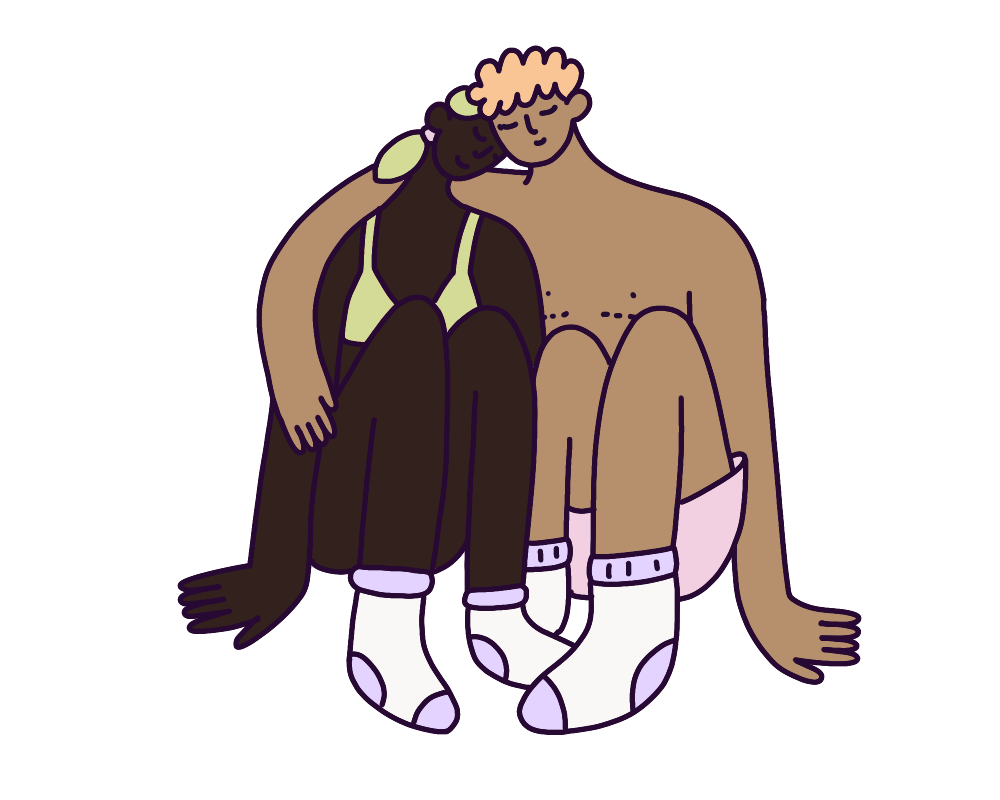Queer Relationships
Whether you’re queer or straight, in a sexually intimate relationship or a platonic one, one thing is the same: all relationships based on love, consent and mutual understanding are valid and powerful. Even if they’re not for you, they should be treated with respect.

First things first: what’s a ‘queer relationship’?
📗 A queer relationship generally refers to an intimate relationship between two people from theLGBTQIA+ community.
People in queer relationships date, connect, love and have sex in the same diversity of ways as people in heterosexual relationships.
🏳️🌈 Did you know?
Among Australian secondary students, in 2021:
- Approx. 6 in 10 people (58.1%) identify as heterosexual
- Approx. 1 in 4 identify as bisexual (23.3%)
- Approx. 3 in 50 identify as gay or lesbian (6.0%)
- Approx. 3 in 50 say they are unsure about their sexuality (6.1%)
--> Source:
7th National Survey of Australian Secondary Students and Sexual Health (2021 - 2022), LaTrobe University
Changing relationships in a changing world
While we’ve only recently begun to see LGBTQIA+ identities on screen, stage and page, queer people and queer relationships have always existed. There is no one ‘right’ way to have a relationship, and many traditional scripts or expectations no longer work for everyone, even for many people who are
The most important things in a relationship are that everything you do together is consensual, that you always feel safe to say 'yes' or 'no', and that you’re free to grow and change. Relationships rarely ever stay the same: It can be useful to keep communicating on how you are changing together, and to forge a path that works for your unique relationship.
What’s the difference between a ‘queer’ relationship and a ‘straight’ one?
Straight relationships typically have a set script. By contrast, queer relationships typically do not. For some, the set script of a straight relationship can look like this:
- You start dating someone
- You meet your partners’ parents (and ideally get their approval)
- You have sex for the first time
- You move in together (potentially buying a property together)
- You have children and raise them in a traditional family structure
- Eventually, you grow old and retire together
This script is very linear (or ‘straight’). It is also very focused on traditional relationship achievements, like settling down, getting married and starting a family. That’s why we tend to associate straight relationships with cisgender and heterosexual people, as cis-het people have had the right to start a family and get married longer than queer people.
By contrast, queer relationships haven’t — and still don’t often — come with a set of expectations or steps to follow. While it can be challenging and confusing not to have a set script to follow, it can also be an opportunity to be creative. Many queer relationships challenge traditional gender roles, define their own paths, and develop new ways of loving, creating community and family together.
However, it’s not always black and white.
Many LGBTQIA+ people also choose to follow the ‘steps’ that are associated with straight relationships, such as by getting married, moving in together or having babies. And similarly, even many cis het people don't follow traditional scripts, and may choose to love each other in ‘less traditional’ ways. For example, some straight people may choose never to get married, or may choose to open their relationship.
Learning from queer relationships
We have a broad view of what ‘queer relationships’ are. We see queer relationships as relationships that are based on love, mutual respect, shared understanding, and intimacy, but are not ordinarily accepted or valued in mainstream society. ‘Intimate’ doesn’t always have to mean that the relationship is physically or traditionally romantic, either.
Love comes in many forms, and all relationships that are based on love, consent and respect are valid and wonderful.
Can you think of some examples of relationships that challenge the norm, besides LGBTQIA+ relationships?
Help us improve this info by letting us know how you found it.
Start
Contraception and STI prevention
